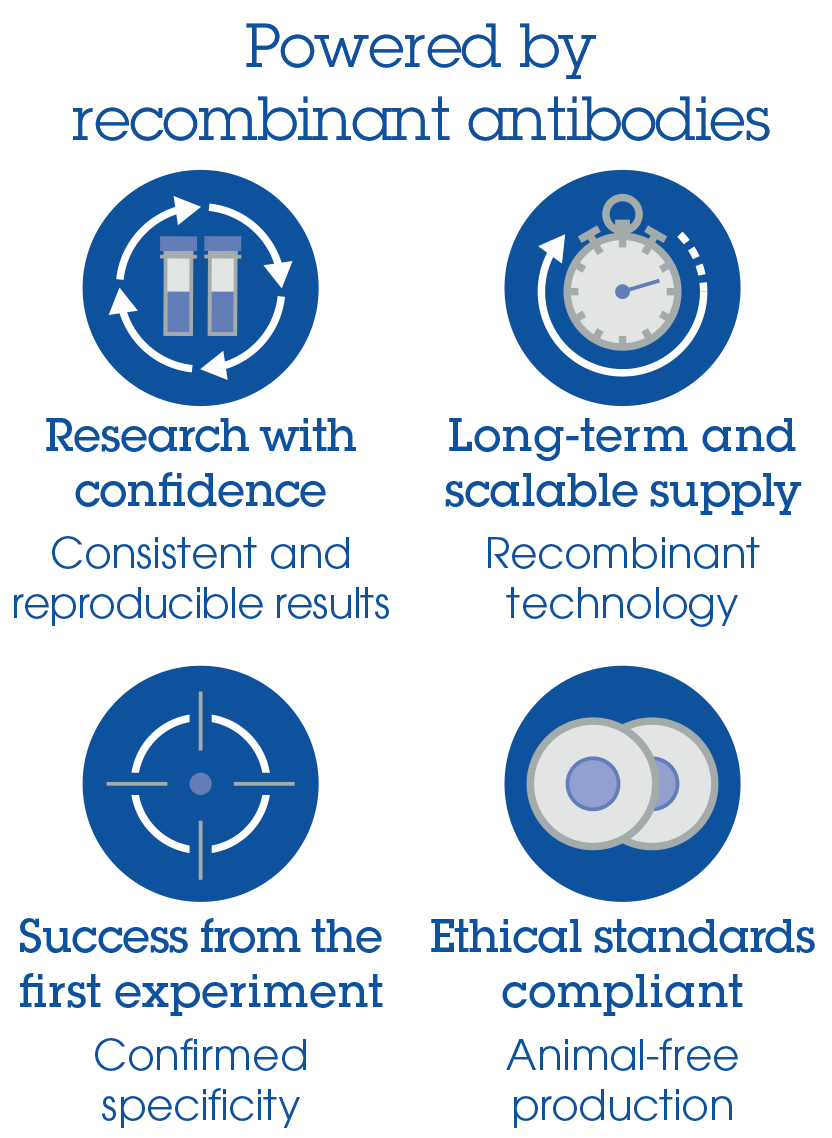Mouse CD31 Matched Antibody Pair Kit (ab212065)
Key features and details
- Unlabeled capture antibody, biotin-labeled detection antibody and calibrated protein standard
- For economical ELISA and ELISA-based assay development
- Reacts with: Mouse
- Range: 31 pg/ml - 2000 pg/ml
Overview
-
Product name
Mouse CD31 Matched Antibody Pair Kit
See all CD31 kits -
Detection method
Colorimetric -
Assay type
ELISA set -
Sensitivity
5 pg/ml -
Range
31 pg/ml - 2000 pg/ml -
Species reactivity
Reacts with: Mouse -
Product overview
Mouse CD31 Matched Antibody Pair Kits include a capture and a biotinylated detector antibody pair, along with a calibrated protein standard, suitable for sandwich ELISA. The Matched Antibody Pair Kit can be used to quantify native and recombinant mouse CD31.
Optimization of the kit reagents to sample type, immunoassay format or instrumentation may be required. Guidelines for use of this kit in a standard 96-well microplate sandwich ELISA using HRP/TMB system of colorimetric detection is described in this assay procedure for the purposes of quantification.
Protocol information and tips on the use of the Matched Antibody Pair kits for sandwich ELISA can be found on our website. An accessory pack can be purchased which includes buffer reagents required to perform 10 x 96-well plate sandwich ELISAs (ab210905).
For additional information on the performance of the antibody pair used in this kit, please see our equivalent SimpleStep ELISA kit ab204527. Please note that while the antibody pair is the same provided in the corresponding SimpleStep ELISA Kit, due to differences in their formulation, this antibody pair cannot be used with the consumables provided with our SimpleStep ELISA Kits.
-
Tested applications
Suitable for: ELISA, IAmore details -
Platform
Reagents
Properties
-
Storage instructions
Store at -20°C. Please refer to protocols. -
Components 10 x 96 tests 5 x 96 tests Mouse CD31 Capture Antibody 2 x 59µg 1 x 50µg Mouse CD31 Detector Antibody 2 x 12.5µg 1 x 12.5µg Mouse CD31 Lyophilized Protein 2 vials 1 vial -
Research areas
-
Function
Induces susceptibility to atherosclerosis (By similarity). Cell adhesion molecule which is required for leukocyte transendothelial migration (TEM) under most inflammatory conditions. Tyr-690 plays a critical role in TEM and is required for efficient trafficking of PECAM1 to and from the lateral border recycling compartment (LBRC) and is also essential for the LBRC membrane to be targeted around migrating leukocytes. Prevents phagocyte ingestion of closely apposed viable cells by transmitting 'detachment' signals, and changes function on apoptosis, promoting tethering of dying cells to phagocytes (the encounter of a viable cell with a phagocyte via the homophilic interaction of PECAM1 on both cell surfaces leads to the viable cell's active repulsion from the phagocyte. During apoptosis, the inside-out signaling of PECAM1 is somehow disabled so that the apoptotic cell does not actively reject the phagocyte anymore. The lack of this repulsion signal together with the interaction of the eat-me signals and their respective receptors causes the attachment of the apoptotic cell to the phagocyte, thus triggering the process of engulfment). Isoform Delta15 is unable to protect against apoptosis. Modulates BDKRB2 activation. Regulates bradykinin- and hyperosmotic shock-induced ERK1/2 activation in human umbilical cord vein cells (HUVEC). -
Tissue specificity
Expressed on platelets and leukocytes and is primarily concentrated at the borders between endothelial cells. Isoform Long predominates in all tissues examined. Isoform Delta12 is detected only in trachea. Isoform Delta14-15 is only detected in lung. Isoform Delta14 is detected in all tissues examined with the strongest expression in heart. Isoform Delta15 is expressed in brain, testis, ovary, cell surface of platelets, human umbilical vein endothelial cells (HUVECs), Jurkat T-cell leukemia, human erythroleukemia (HEL) and U937 histiocytic lymphoma cell lines (at protein level). -
Sequence similarities
Contains 6 Ig-like C2-type (immunoglobulin-like) domains. -
Domain
The Ig-like C2-type domains 2 and 3 contribute to formation of the complex with BDKRB2 and in regulation of its activity. -
Post-translational
modificationsPhosphorylated on Ser and Tyr residues after cellular activation. In endothelial cells Fyn mediates mechanical-force (stretch or pull) induced tyrosine phosphorylation. -
Cellular localization
Membrane. Cell junction. Localizes to the lateral border recycling compartment (LBRC) and recycles from the LBRC to the junction in resting endothelial cells and Cell junction. Localizes to the lateral border recycling compartment (LBRC) and recycles from the LBRC to the junction in resting endothelial cells. - Information by UniProt
-
Alternative names
- Adhesion molecule
- CD31
- CD31 antigen
see all -
Database links
- Entrez Gene: 18613 Mouse
- SwissProt: Q08481 Mouse
- Unigene: 343951 Mouse
Images
-
Standard calibration curve. Background subtracted values are graphed.
-
To learn more about the advantages of recombinant antibodies see here.





